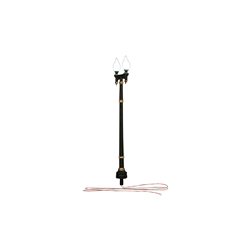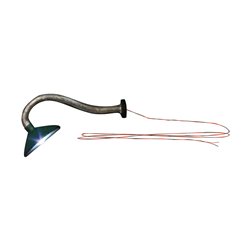Static grass puffer bottles work by manually charging model grass fibres with static electricity. When the charged...
No products
Product successfully added to your shopping cart
There are 0 items in your cart. There is 1 item in your cart.
Search Tips
Which bulb types and colour temperature do I need on my model railway layout?
When it comes to lighting your model railway, the choice of bulb type and colour temperature can make a significant difference in achieving a realistic and visually appealing look. Whether you're illuminating a quaint country station, a bustling city scene, or the dimly lit confines of a locomotive shed, selecting the appropriate lighting is crucial. Let's explore some key considerations to guide your decision-making.
Bulb types
The traditional incandescent bulb has long been a staple for model railway lighting, providing a warm, familiar glow. However, the emergence of more energy-efficient alternatives has opened up a wider range of possibilities. LED bulbs, in particular, have become increasingly popular due to their versatility, longevity, and low power consumption.
LEDs offer a diverse selection of colour temperatures, from the cosy amber tones of incandescents to the crisp, cooler white light of fluorescent or high-intensity discharge (HID) lamps. When selecting LED bulbs, pay close attention to the Kelvin (K) rating, which indicates the colour temperature. A lower Kelvin rating (2700K-3000K) will provide a warmer, more yellowish light, while a higher rating (4000K-6500K) will result in a cooler, bluer-tinged illumination.
Matching colour temperatures
Consistent colour temperature is crucial for creating a cohesive and believable lighting environment on your layout. Imagine a station platform bathed in the warm glow of old-fashioned oil lamps, contrasted with the harsh, clinical light of modern LED streetlamps – it would look decidedly out of place.
When selecting your lighting, aim to match the colour temperature to the era and setting you're modelling. For historical scenes, opt for lower Kelvin ratings in the 2700K-3000K range to recreate the amber tones of vintage lighting. For more contemporary settings, higher Kelvin temperatures (4000K-6500K) can help achieve a crisper, more modern aesthetic.
Blending lighting sources
In reality, no environment is ever lit by a single light source. By incorporating a variety of bulb types and colour temperatures, you can add depth, texture, and realism to your layout. For example, you might use warmer, lower-Kelvin LED bulbs for interior lighting, balanced with cooler, higher-Kelvin bulbs for exterior streetlamps and floodlights.
Experiment with mixing and matching different lighting solutions to achieve the desired ambience. Don't be afraid to make adjustments and refine your approach until you're satisfied with the final result.
Remember, the right lighting can make all the difference in bringing your model railway layout to life. By carefully selecting the appropriate bulb types and colour temperatures, you'll create an immersive and believable visual experience for your viewers.
Click here to receive the tips weekly in your mailbox. You can unsubscribe at any time.










